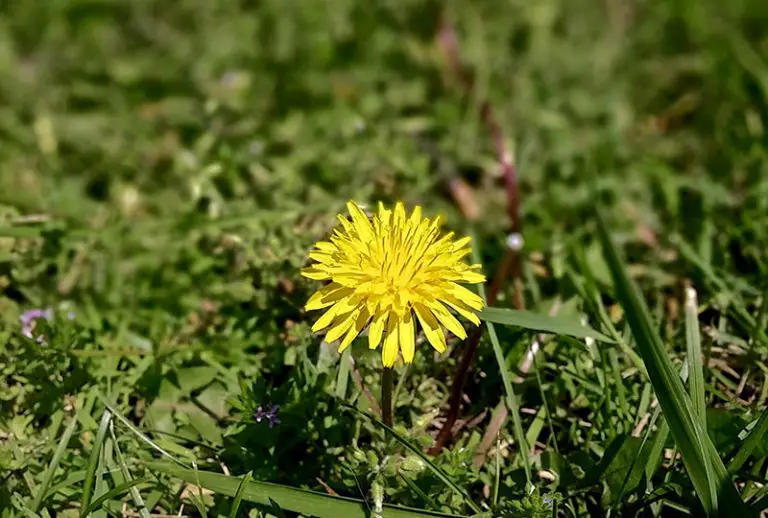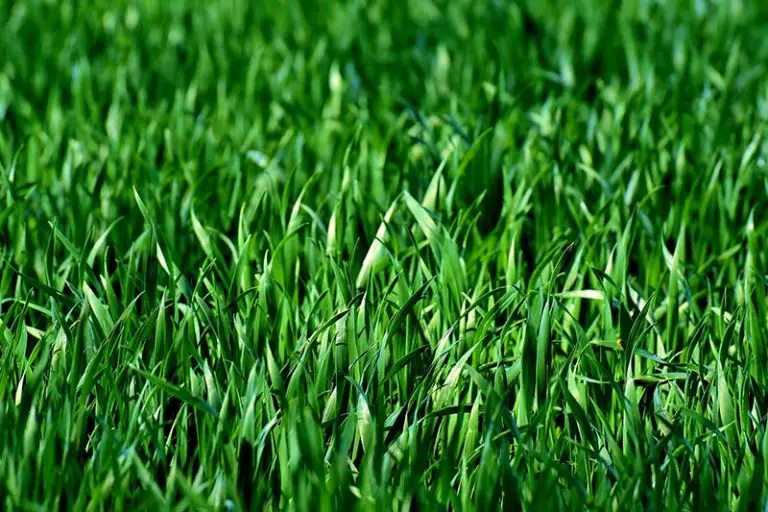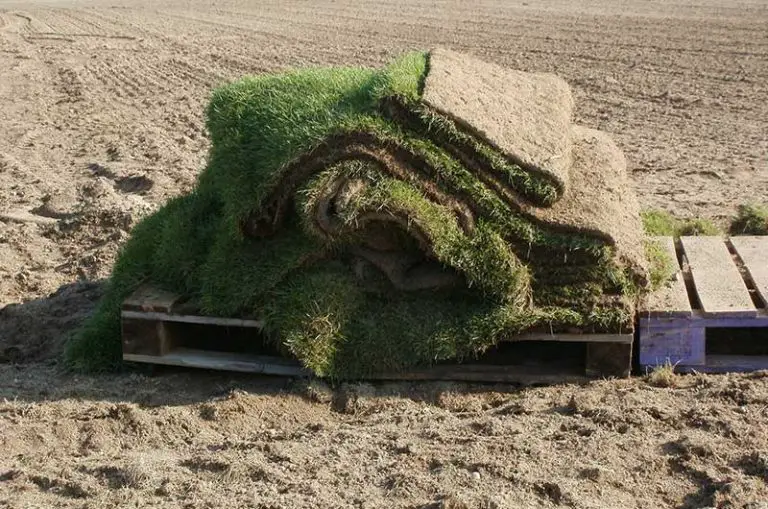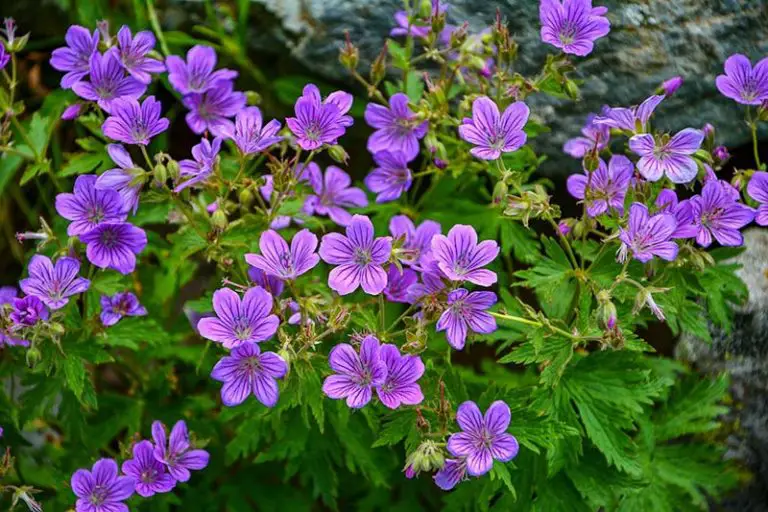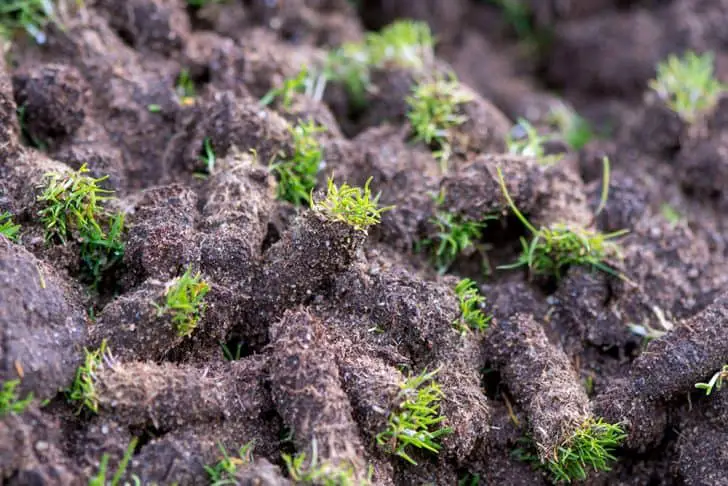Growing Grass in Shaded Areas: Tips for a Lush Lawn
Growing grass in shaded areas can be challenging, but it isn’t an impossible feat. You can still grow a green, uniform lawn by planting the right type of grass in the areas that receive less sunlight than others.
The best grass for shade in warm-season lawns is St. Augustine grass, while the best grass for shade in cool-season lawns is tall fescue. Regardless of the species, it isn’t possible to grow grass in full deep shade; however, these aforementioned grass types can still thrive in shaded areas that receive a minimum of about 4 hours of partial sunlight per day.
Best Grass for Shade
1. St. Augustine Grass
Hours of Sunlight Required: Minimum of 4 hours of partial sun per day.
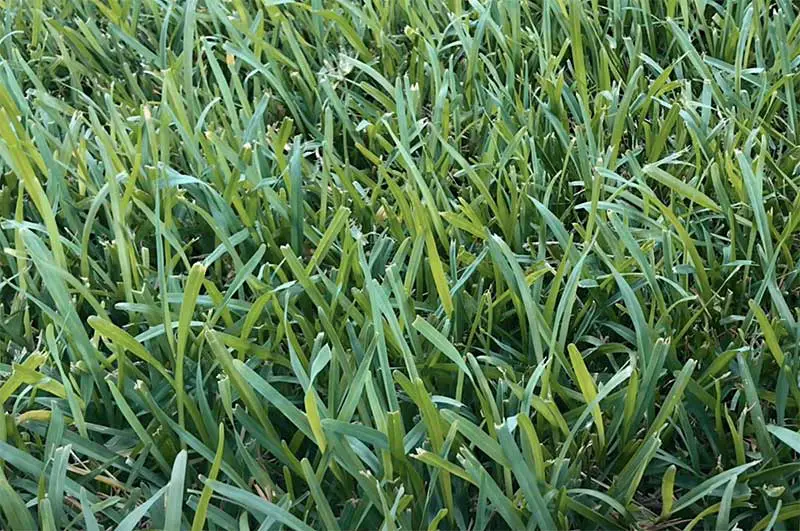
St. Augustine grass is a warm-season shade-tolerant grass variety. For warm-season lawns, St. Augustine is the best grass for shade; although this grass will struggle in deep shade, it is known to thrive under partially shaded conditions.
The best cultivars of St. Augustine grass for shade are Bitter Blue, Sapphire, Seville, and Palmetto; these grasses only require about 4 to 6 hours of sunlight per day to thrive. Floratam, the most common St. Augustine grass cultivar, instead requires a minimum of 6 to 8 hours of sunlight daily.
2. Zoysia Grass
Hours of Sunlight Required: Minimum of 6 hours of partial sunlight per day, or 3 to 4 hours of direct sunlight per day.
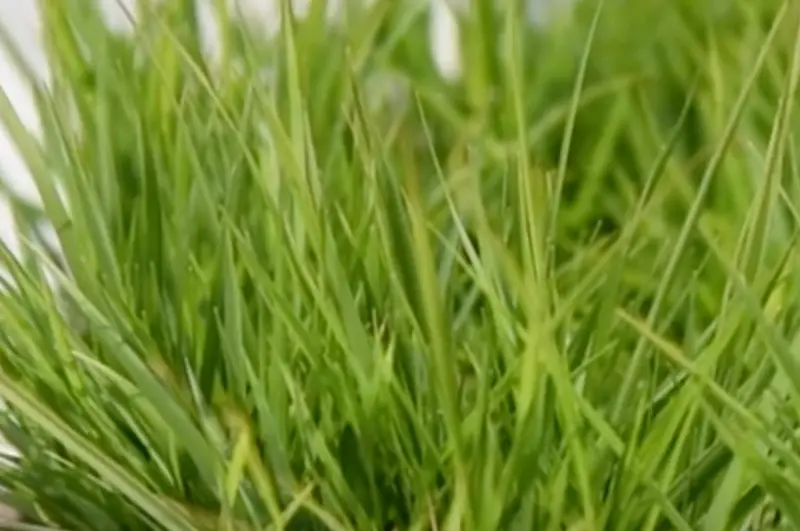
Zoysia grass is the next best option when choosing the best grass for shade in your warm-season lawn. This grass type is a good choice for lawns that see partial shade from nearby buildings and distant trees.
The most shade-tolerant grass cultivars of zoysia grass are Cavalier, Crown, Diamond, El Toro, and Zeon. In general, fine-bladed cultivars of zoysia like Zeon are more tolerant to shade. With the right care, these grasses should be able to survive under 6 hours of partial sunlight each day.
3. Centipede Grass
Hours of Sunlight Required: Minimum of 6 hours of partial sunlight per day.
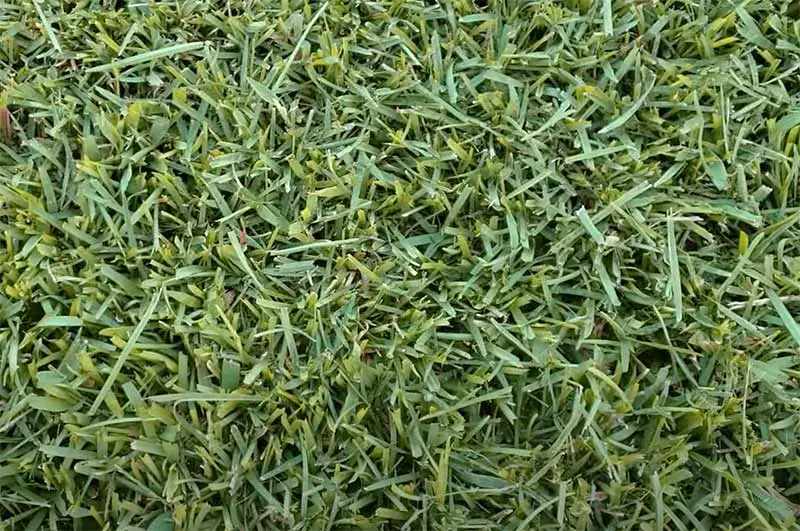
Centipede grass is another warm-season shade-tolerant grass type. Although this grass prefers full sun, it will survive on partially shaded parts of the lawn.
The most shade-tolerant cultivars of centipede grass are Oaklawn and Tennessee Hardy. These cultivars can survive in areas that receive 6 hours of partial sunlight per day.
4. Fescue
Hours of Sunlight Required: Minimum of 4 to 6 hours of partial sunlight per day.
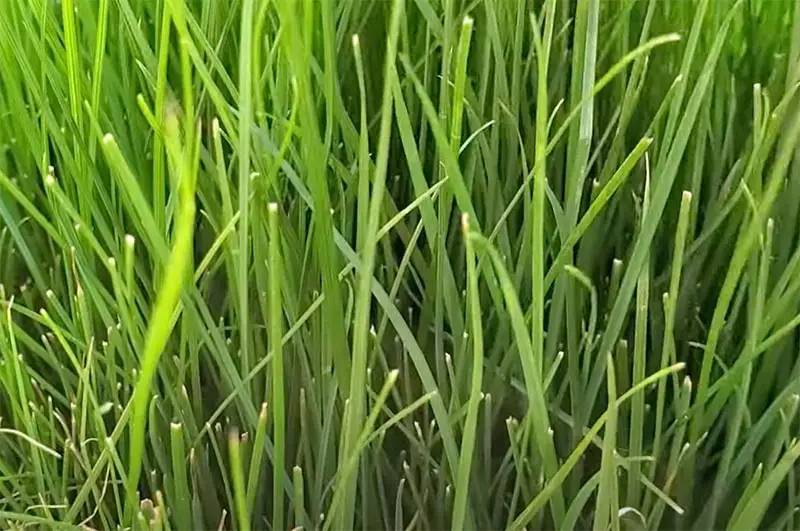
Fescue is a cool-season grass type that will be able to survive in partially shaded areas. Turf-type tall fescue is also highly tolerant of dry and low-nutrient soils.
Tall fescue is the best fescue variety for shade tolerance, being able to tolerate 4 to 6 hours of partial or dappled shade per day. However, this grass will grow best in areas with full sun. Other shade tolerant fescue varieties include fine fescue, red fescue, and Chewings fescue.
5. Perennial Ryegrass
Hours of Sunlight Required: Minimum of 4 to 5 hours of direct sunlight per day.
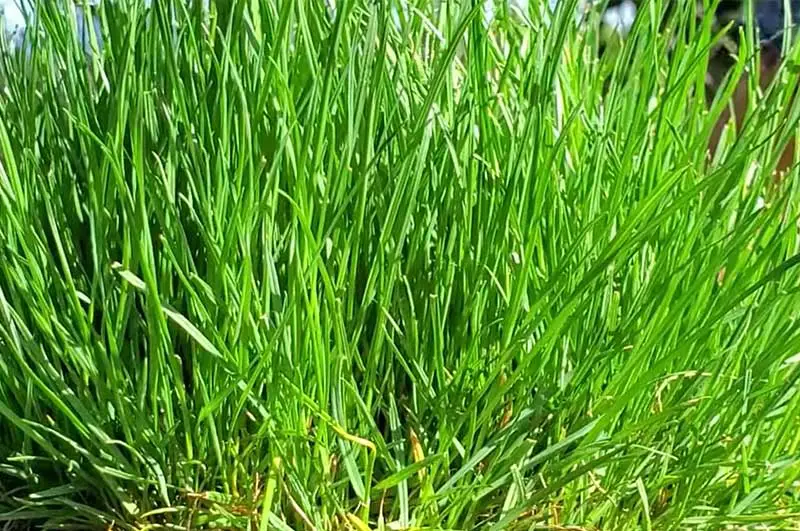
A variety of ryegrass, perennial ryegrass is a cool-season shade-tolerant grass type. Although it won’t tolerate partial shade, perennial ryegrass requires less extensive hours of direct sunlight than other grass varieties.
For perennial ryegrass to grow, your lawn must receive at least 4 to 5 hours of direct sunlight per day. Avoid planting this grass under trees; perennial ryegrass will not grow under prolonged periods of dappled or filtered shade.
6. Bluegrass
Hours of Sunlight Required: Minimum of 4 hours of partial sunlight per day.
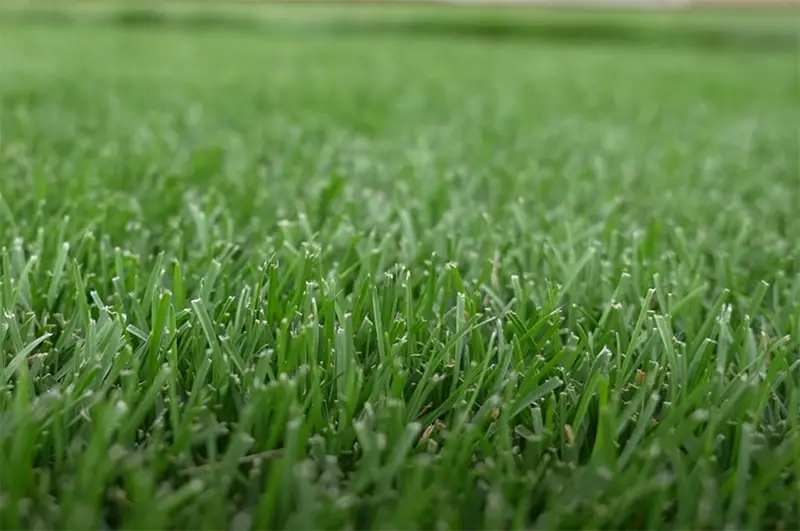
Bluegrass is a cool-season shade-tolerant grass type you can plant in partially shaded areas. Bluegrass varieties grow best in cooler climates with mild summers.
The best bluegrass varieties for shade tolerance are rough bluegrass, specifically the Sabre cultivar, and the Glade and BenSun cultivars of Kentucky bluegrass. These varieties can survive on 4 hours of partial or dappled sunlight per day.
Can You Grow Any Species of Grass in Full Shade?
No, grass in full shade will not grow, regardless of the species. Even the most shade tolerant turfgrass species requires at least 4 hours of partial sunlight to survive.
There are no full-shade grass varieties because turfgrass varieties require direct sunlight to photosynthesize. Photosynthesis is the process that grass and other plants use to feed themselves; they take in sunlight before converting it into usable energy, and this energy fuels their growth and root development. It will therefore not be possible to grow healthy grass in full shade, no matter what turfgrass species you try to plant in these areas.
With that said, there are several types of ornamental grasses that will grow well in shade. These grasses are essentially used for decorative purposes, offering a solution for areas of the lawn in full shade.
A few of the best ornamental grasses for shade include:
- Autumn moor grass
- Blue grama grass
- Fall blooming reed grass
- Japanese forest grass
- Korean feather reed grass
- Fall blooming reed grass
- Liriope
- Little Miss maiden grass
Most of the ornamental grasses mentioned above will grow thick, fast-forming, arching clumps of foliage. Occasionally the blades of these grasses will be variegated in color. If ornamental grasses aren’t an appealing choice, your only other option is to reduce the shade in full-shaded areas of your lawn; you can do this following the guidance in the next section.
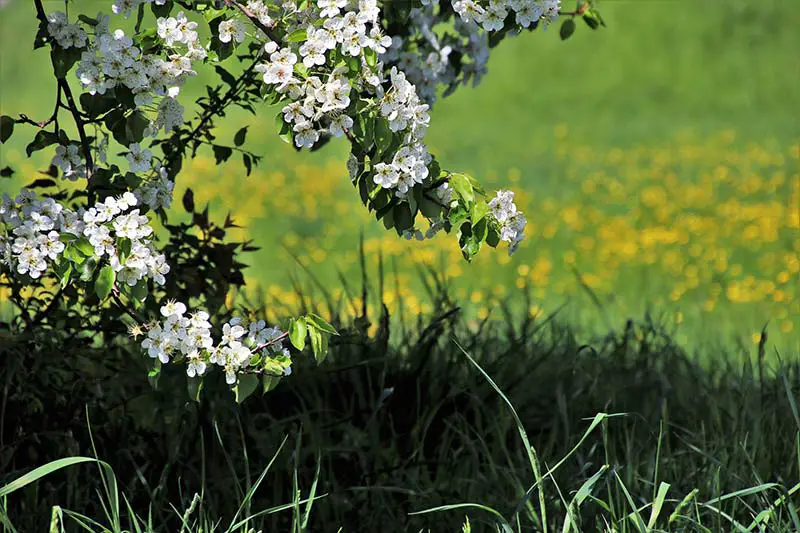
How to Grow Grass in Shaded Areas
1. Assess Extent of the Shade
First of all, you should monitor your lawn throughout a sunny day to assess the extent of the shaded areas. Take note of which areas are in full shade, and which parts are in partial or dappled shade.
This step is important as even shade-tolerant grass types require some sunlight to grow. All areas in your lawn should receive 3 to 4 hours of direct sunlight or 4 to 6 hours of partial sunlight; you’ll be able to grow a shade-loving grass type in these areas. For parts of the lawn in full shade, the only solution is to reduce the shade if possible.
2. Reduce Tree Foliage
If there are areas of full shade in your lawn from large trees, you should consider cutting back the trees’ foliage. It won’t be necessary to remove the trees entirely; trimming them down to allow at least partial sunlight will make it possible to plant a shade-tolerant grass species in the area.
To reduce shade from large trees, remove lower branches to allow sunlight to pass through and reach the grass beneath. Reduce the shade further by pruning interior branches, which will open gaps for sunlight to pass through the trees’ canopy. Pruning the interior branches in this way will also improve air circulation around the middle of the tree; this can have a beneficial effect on tree health as it reduces the tree’s susceptibility to disease. If you’d rather avoid the labor, you can hire a professional arborist to prune the trees for you.
3. Grow Best Grass for Your Climate
Before you consider shade tolerance, you need to make sure you’re growing the best grass for your climate. All grass species fall into two categories, being either cool-season grass or warm-season grass. If you’re growing the wrong grass for the conditions in your area, it will struggle further to grow in shade.
If you live in the north or a cool transition state, you should pick a cool-season shade-tolerant grass variety; these include fescue, ryegrass, and rough bluegrass. If you live in the south or transition state with warmer conditions, instead grow a warm-season shade-tolerant grass type; these include St. Augustine, zoysia grass, and centipede grass. You may want to consider overseeding or reseeding the shaded areas in your lawn with these grasses.
4. Plant a Shade Tolerant Grass Seed Mix
You don’t need to commit to one single grass seed when seeding shaded areas in your lawn. There are many seed mixes commercially available from companies like Scotts, Greenview, and Pennington that are specifically designed for shade. These mixes contain a combination of different grasses and are designed for varying levels of shade and sun.
If you’re concerned about the aesthetics of your lawn, a seed blend is the best route to go down; these mixes are more likely to produce grass that blends well with the rest of the grass on your lawn. Mixes that are labeled for ‘dense shade’ are best for areas that only receive between 4 and 6 hours of partial sun; alternatively, the best grass for sun and shade is a mix simply labeled for ‘shade’.
5. Adjust Mowing Habits in Shaded Areas
Grass in shaded areas of the lawn will grow better if you mow it to a taller height. The longer the blades, the more sunlight the grass plants can absorb, even in partially shaded areas. Cutting your grass to a taller height also improves the lawn’s resistance to weeds and fungal disease.
Ideal mowing heights vary based on the individual grass species. Look up the recommended range for your grass type and cut the grass to the upper end of this range. Remember to follow the ⅓ rule by taking off no more than ⅓ of the grass’ height per mowing session. As an additional tip, always mow with sharp mower blades; you should sharpen your mower blades every 20 to 25 hours of usage.
6. Adjust Watering in Shaded Areas
As grass in shade sees less direct sunlight, these areas of the lawn lose less water to evaporation. You won’t need to irrigate as much in these parts of the lawn compared to those in full sun; overwatering grass in shade will increase the risk of fungal disease developing in these areas.
As a general rule, water the shaded areas less frequently than how often you’d water the rest of your lawn. The only exception to this guidance is for any grass close to trees; grass in these areas must compete with tree roots for water, in addition to oxygen and nutrients. It’s therefore important to water grass near to trees as normal.
7. Add More Potassium to Shaded Areas
In addition to nitrogen (N) and phosphorus (P), potassium (K) is one of the primary nutrients that grass needs to grow. Studies show that grass growing in shade benefits more from potassium than high levels of nitrogen.
Nitrogen drives foliar growth in the grass, making the grass blades more succulent. While this sounds like a good thing, too much nitrogen in shady areas can potentially weaken the blades. It may also invite fungal diseases into the lawn. Potassium, on the other hand, is responsible for improving the grass’ tolerance and disease immunity; these are especially important characteristics for grass growing in shaded areas.
To add potassium to soil in your lawn naturally, use a material like wood ash, alfalfa meal, greensand, or potassium sulfate. It’s also possible to amend the soil with a commercial fertilizer; choose the best lawn fertilizer ratio to provide your grass with more potassium and less nitrogen.
8. Reduce Traffic in Shaded Areas
Grass growing in shade will be particularly vulnerable to damage from foot traffic. Damage in shaded areas will occur more easily, and the grass will also take a longer time to recover.
In shaded parts of the lawn, try to minimize the amount of traffic from people, animals, and cars. If your lawn gets a lot of use, consider seeding with a high-traffic grass seed; for cool-season lawns, the best grass for high traffic and shade is tall fescue; for warm-season lawns, the best grass is zoysia.

